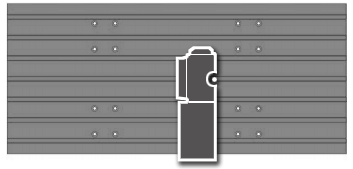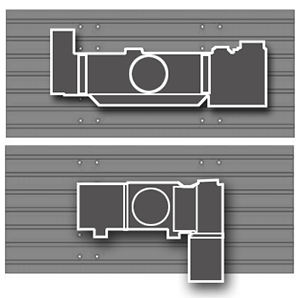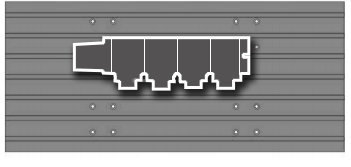Haas machining centres have been available with full fourth axis options since the release of the very first one way back in 1987 and throughout all of these 23 years the fourth axis has been programmable as a ‘full’ fourth axis – that is simultaneous rotary motion with a range of +/-99999.999 degrees.
This last piece of information is important because it gives the total range around a central 0 degree position, in other words programming the fourth axis to move 720 degrees (A720.) means just that – two complete revolutions away from the zero position (A0.).
Why is this important? – Well it’s because when commanding a return to A0. users are sometimes surprised to see the rotary table perform two complete revolutions in the opposite direction to get back to what is perceived as the ‘same’ position, but as we have discussed above A0. is not the same as A720. in respect of the distance travelled.
However through customer feedback Haas introduced the function Quick Rotary G28 under Setting 108 which provided the ability for the rotary axis to take the shortest route when being commanded to return to reference position using G28 A0. this will directly affect the user cycle time and thus bottom line profitability.
Turning this setting ON will return the rotary unit back to zero using the shortest distance.
For example if the rotary unit is at 10° and a zero return is commanded, the rotary table will rotate 350° if this setting is OFF. If the setting is ON the table will rotate -10°.
In order to use Setting 108, the parameter bit CIRC. WRAP. (10) must be set to 1 on parameter 43 for the A axis and Parameter 151 for the B-axis. If param–eter bit(s) are not set to 1 the control will ignore setting 108.
For Example: When a rotary fits with alternative fixturing, it may fit in that particular Haas mill, but will require a sub-plate or alternate T-slot for proper positioning. We have labeled this particular rotary and mill combination with a yellow caution
You can design and build your own sub-plate using the dimensions of your Haas mill and the dimensions of the rotary you'd like to use on that mill. Product dimensions are available for every machine and rotary on this website.
Single-Head Rotary Tables and Indexers are usually mounted to the right side of the table, with the rotary facing the centre of the machine. This is the basic setup we used to determine the fit of your rotary product.

Image shown for mounting example purposes only. Your actual rotary and mill appearance may differ.
Trunnion Tables, T5Cs, and TRTs are usually mounted in the centre (or slightly off-centre) of the mill table. If you are using probing on the mill, be aware of the interference with larger tools, especially during tool changes.
NOTE: Trunnion units present interference issues with the swing of the unit relative to the machine column and spindle head.

Image shown for mounting example purposes only. Your actual rotary and mill appearance may differ.
Multi-Head Rotary Tables and Indexers are usually mounted toward the back of the table, with the indexer heads or platter facing forward. To mount a multi-head rotary in a different orientation, you must use alternative fixturing.

Image shown for mounting example purposes only. Your actual rotary and mill appearance may differ.
Important Information:
4-axis machines cannot use dual-axis rotaries.
Some options may affect mounting (EC-1600 4th-Axis Table, Low-Profile Tables, Table Spacers, Column Risers, etc.
Tool Changers: SMTCs and umbrella tool changers both present interference issues, plan appropriately.

